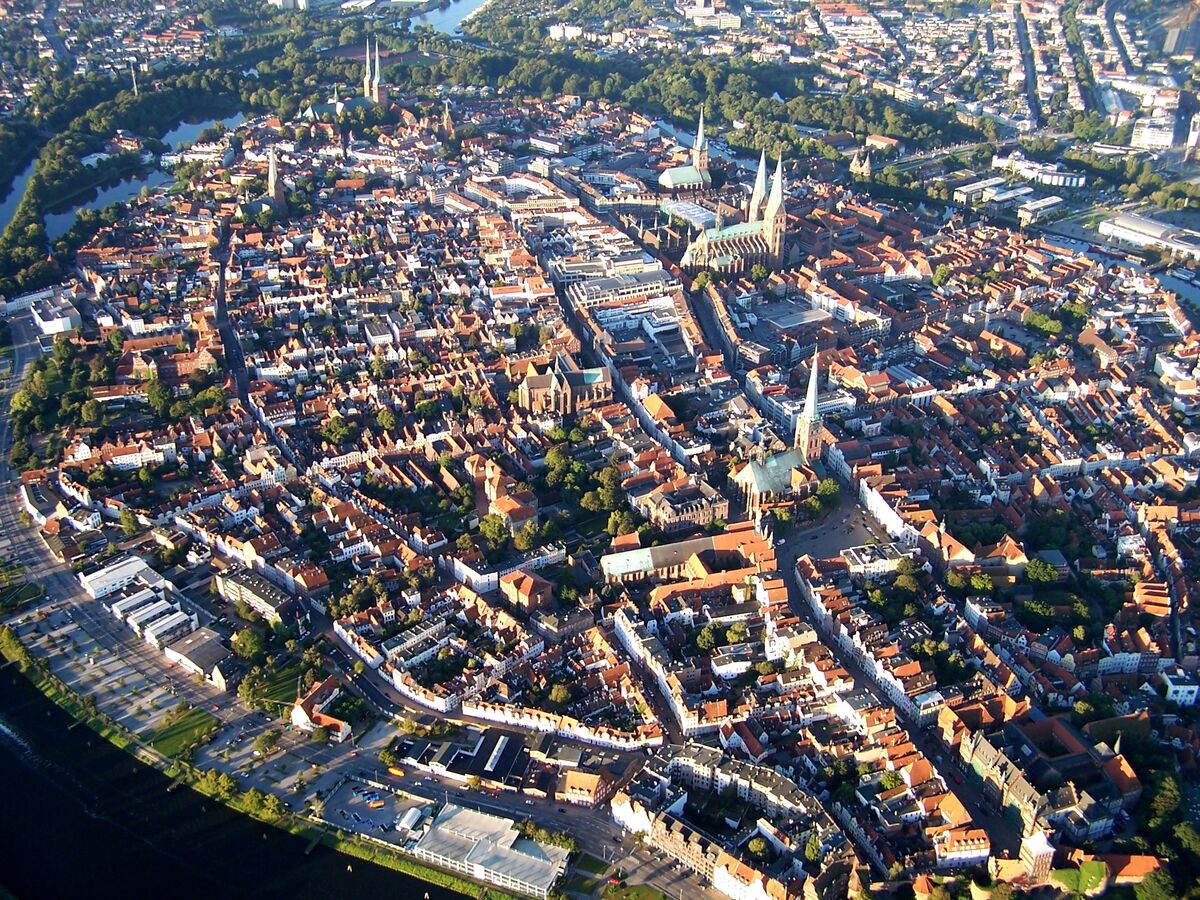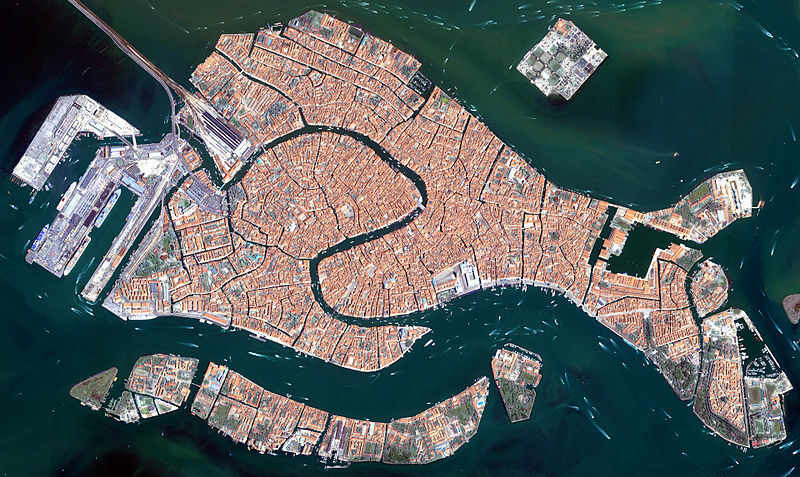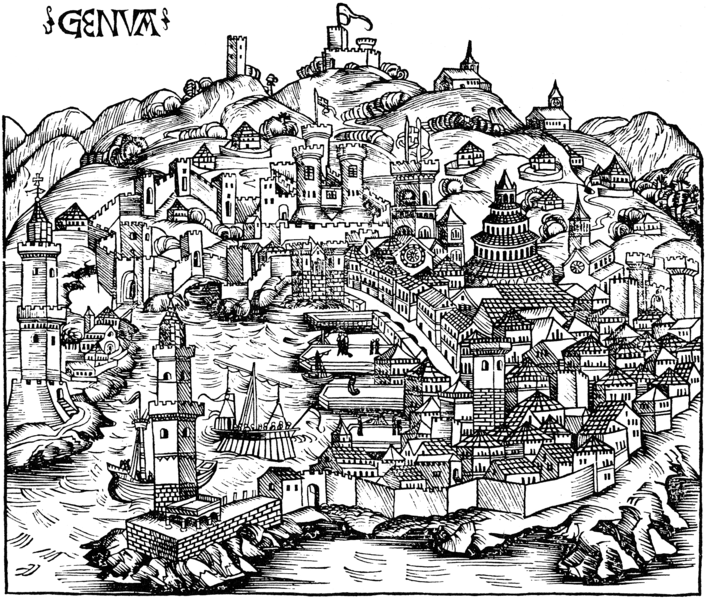The concepts covered in this fact sheet go beyond those seen in high school. It is intended as a supplement for those who are curious to learn more.
Cologne is Germany's oldest major city. It is located on the Rhine, at the crossroads of trade routes between East and West. This geographical position explains the city's growth in the Middle Ages. The city became a member of the Hanseatic League in 1475.
The Hanseatic League, also known as the Hanse, the Germanic Hanse or the Teutonic Hanse, refers to an association of merchant towns in northern Europe. Active from the 12th to the 17th century, it had a major influence on trade and politics on the Old Continent. Formed by the merchants of Cologne, Hamburg and Lübeck in 1281, it included over 150 towns by 1370.
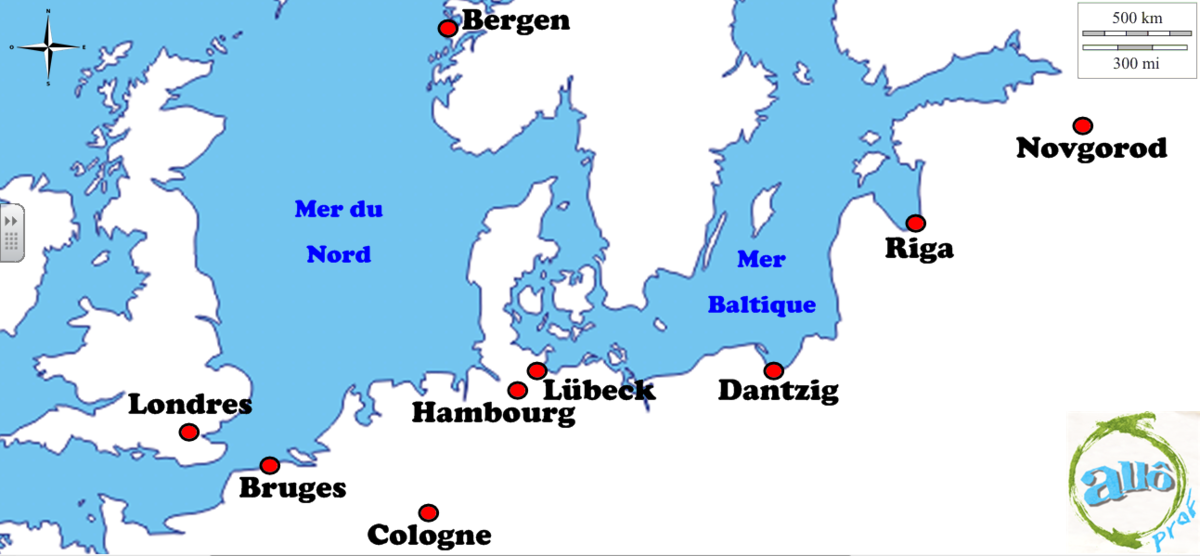
Some Hanseatic League towns in the 13th and 14th centuries.
Note : An image in English is coming soon.

The Hahnentor Gate is one of 12 medieval gates that can still be seen in Cologne today.
The city was nicknamed “Queen of the Hanseatic League” because it was the capital of the Hanseatic League until the end of the 16th century. Situated on the Baltic Sea, the city had easy access to maritime trade, making it one of the most powerful cities in Northern Europe. By the 14th century, it was Germany's second-largest city after Cologne. Its importance declined with the disappearance of the Hanseatic League, but it remained a commercial center.
Hamburg was founded in the 9th century by Charlemagne. A German city at the crossroads of the Elbe and Alster rivers, Hamburg boasts a major port. In the 13th century, the city's merchants joined forces with those of Lübeck, the first step towards the creation of the Hanseatic League.
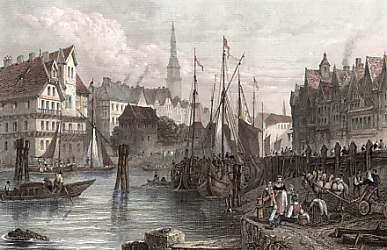
Engraving of Hamburg in 1859.
Even today, the Hanseatic League is an integral part of Hamburg's history and identity. On the city's license plates, the first two letters are HH, which stands for Hansestadt Hamburg (Hanseatic Hamburg). In addition, the city's official name is “Free and Hanseatic City of Hamburg”.

A Hamburg license plate.
Bruges is a Belgian city located 100 kilometers from the North Sea. It has direct access to the sea, which favors maritime trade. In 1253, the city became a Hanse trading post on the North Sea, joining London and Bergen. Bruges is renowned for its cloth, carpet, canvas, velvet and silk factories.

Engraving of the city of Bruges dating from 1833.
Bruges' most flourishing period was between the 12th and 15th centuries, when the city was a hub of European trade. Bruges maintained trade links with the whole of northern Europe, as well as with Italian cities such as Venice and Genoa.
The city of Venice took advantage of the Crusades to trade with the Orient (with the Greeks and Arabs). From the 12th century onwards, Italian cities enjoyed a very prosperous period. By the 14th century, Venice and Genoa controlled trade on the Mediterranean. Competition between the two republics led to war. At stake was control of the trade routes. Among other things, they clashed towards the end of the 14th century.
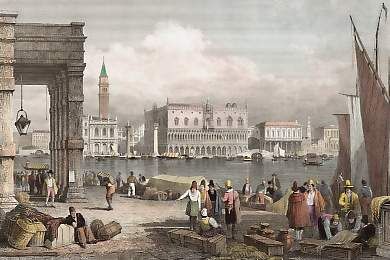
Engraving of Venice in 1830.
The peak of Venice's growth came in the 13th century. At that time, the city controlled several territories and possessed the greatest military and trading power in the Middle East. Its power declined, however, with the discovery of America in 1492 and the rise of the Turks in Europe.
During the medieval period, Genoa, like Venice, was an Italian maritime republic. It enjoyed several prosperous periods, thanks in particular to the Crusades. Genoese sailors transported Christian troops. On more than one occasion, the Genoese fleet clashed with that of Venice, its main competitor.
Genoa's most glorious period came in the 14th century, when the maritime republic established an empire around the Mediterranean and Black Seas with its many trading posts.
Genoa went to war with Venice on several occasions (1294, 1298, 1350-1355). It won a number of battles, but eventually lost the upper hand and lost its position of strength.

